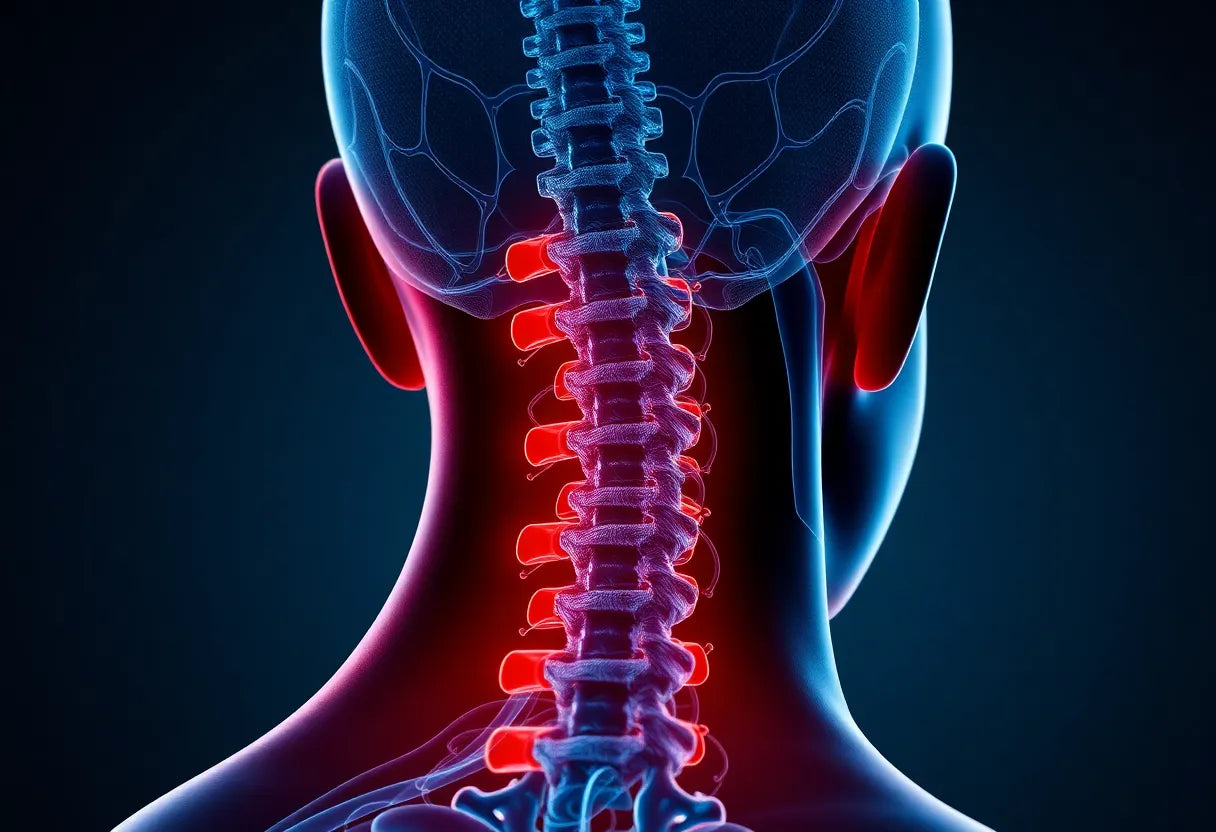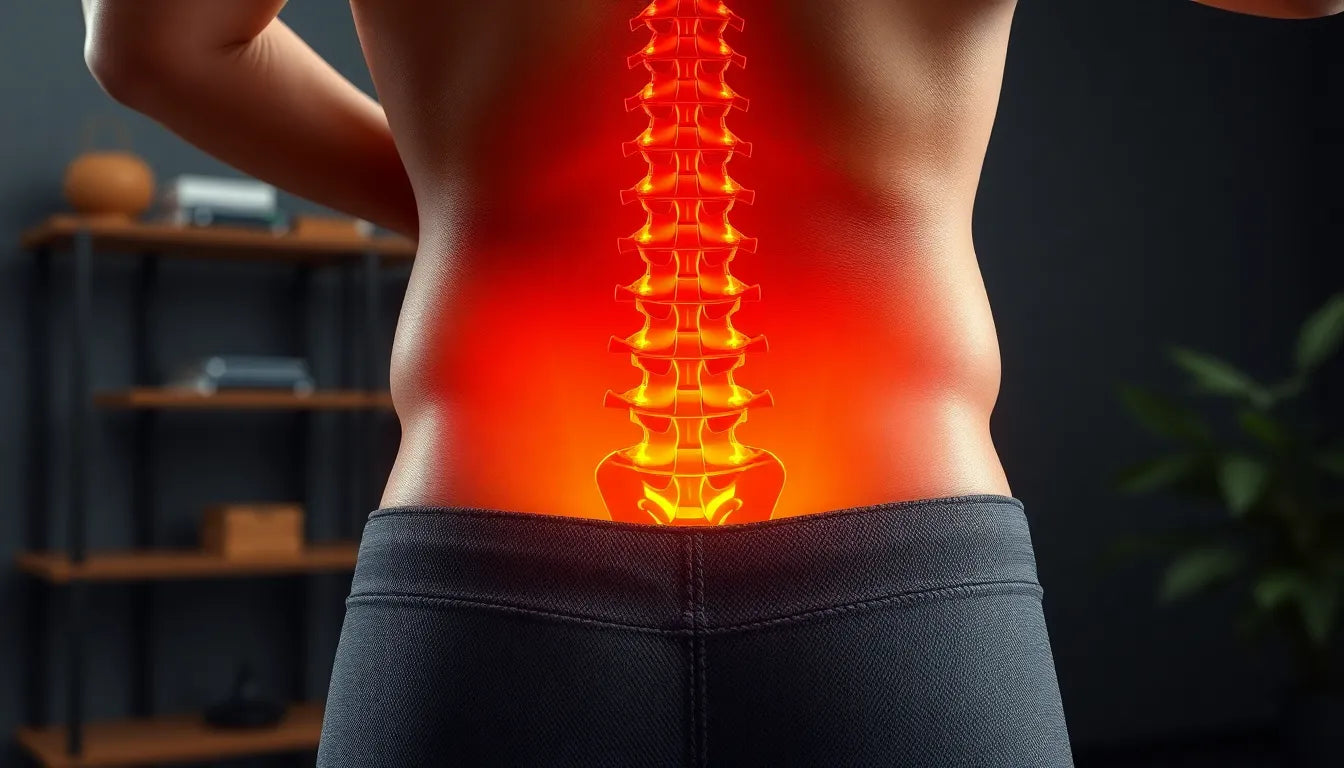Lower back pain is a common ailment that affects millions of people worldwide, significantly impacting their daily routines and quality of life. While many experience this discomfort, the specific symptoms of a lower back herniated disc can often go unnoticed or misdiagnosed, leading to prolonged pain and potential complications. Understanding these symptoms is crucial for effective management and timely treatment, ensuring that individuals can maintain an active and healthy lifestyle.
Understanding herniated discs in the lumbar region
A herniated disc occurs when the soft inner gel of an intervertebral disc protrudes through a tear in the tougher outer layer. This condition is particularly common in the lumbar region of the spine, which supports much of the body's weight and endures significant stress during everyday movements. The lumbar spine consists of five vertebrae cushioned by intervertebral discs that act as shock absorbers. When one of these discs herniates, it can press on nearby nerve roots, leading to a variety of symptoms that can affect not just the back, but also the legs and other parts of the body.
The significance of recognizing symptoms
Recognizing the symptoms of a lower back herniated disc is essential for several reasons. Firstly, early identification allows for timely medical intervention, which can prevent further complications and improve the outcome of treatment. Symptoms such as sharp, burning pain, numbness, tingling, or muscle weakness can indicate nerve compression, which may require specific therapeutic approaches to alleviate. Additionally, understanding these symptoms helps differentiate a herniated disc from other causes of back pain, ensuring that individuals receive the appropriate care and avoid unnecessary treatments.
A glimpse into what's next
In the following sections, we will explore the specific symptoms associated with lower back herniated discs in greater detail. We will discuss their causes, how they manifest, and when it is crucial to seek medical attention. By unlocking the mystery of these symptoms, we aim to empower you with the knowledge to take control of your health and make informed decisions about your care. Stay tuned as we delve deeper into this common yet often misunderstood condition.
Core symptoms of a lower back herniated disc
One of the most telling signs of a lower back herniated disc is the presence of low back pain. This pain is often described as sharp or burning and can intensify with certain movements, such as bending or twisting. Many individuals also report that the pain radiates to other parts of the body, making simple tasks like sitting or standing for prolonged periods challenging.

Lumbar support belt
Justérbart støttebælte til lænderyg med stærk kompression og lindring af smerter, især ved diskusprolaps og ischias.
The prevalence and impact of sciatica
Sciatica is another hallmark symptom, characterized by pain that travels from the lower back down through the buttock and into one leg. This type of pain differs from general back pain due to its specific path along the sciatic nerve. Sciatica is not only common but also significantly impacts daily activities, as it can cause discomfort when walking or sitting. Recognizing this pattern is crucial for differentiating a herniated disc from other back issues.
Numbness, tingling, and muscle weakness
In addition to pain, individuals with a herniated disc often experience numbness or tingling, commonly referred to as "pins and needles." These sensations typically occur in the buttock, leg, or foot and result from nerve irritation or compression. Muscle weakness is another symptom that can arise, affecting one's ability to walk or maintain balance. This weakness might lead to stumbling or difficulty performing routine activities, underscoring the importance of addressing these symptoms promptly.
Additional symptom insights
For some, a dull, persistent aching in the lower back can worsen at night, disrupting sleep. This chronic discomfort can be particularly frustrating and may require targeted strategies for relief. Although rare, the loss of bladder or bowel control is a serious symptom that demands immediate medical attention, as it may indicate cauda equina syndrome, a condition that requires urgent care to prevent permanent damage.
Understanding symptom patterns and variations
The symptoms of a herniated disc can vary significantly based on which nerve roots are affected. For instance, compression of different nerves can lead to varying degrees of pain or sensory changes. It's also worth noting that not all herniated discs cause noticeable symptoms; some are only identified through imaging tests. This variability highlights the importance of a thorough diagnostic process to accurately identify the cause of symptoms.
The diagnostic process for herniated discs
Diagnosing a lower back herniated disc typically involves a combination of clinical examinations and imaging techniques. Neurological exams help assess muscle strength, reflexes, and sensation, while imaging tests like MRI provide detailed views of the spine to confirm the presence and extent of a herniation. Early diagnosis is vital, as it allows for timely intervention and can prevent further complications, ensuring a better prognosis for recovery.
Continuing the journey: Diagnostic and treatment insights
Once a herniated disc is diagnosed, understanding the treatment options becomes crucial. For many, conservative measures are the first line of defense. These may include physical therapy, which focuses on strengthening the muscles around the spine, improving flexibility, and reducing pressure on the affected nerves. Pain management techniques, such as anti-inflammatory medications or epidural steroid injections, can also provide relief.
In cases where conservative treatments do not alleviate symptoms, surgical options may be considered. Procedures like microdiscectomy, which involves removing the portion of the disc pressing on the nerve, can offer significant relief. However, surgery is typically reserved for severe cases where other treatments have failed, or when symptoms like loss of bladder or bowel control are present, indicating a medical emergency.
The role of ergonomics in managing symptoms
Incorporating ergonomic solutions into daily life can significantly aid in managing the symptoms of a lower back herniated disc. Ergonomic chairs, for example, support proper posture and reduce strain on the spine during prolonged sitting. Adjustable desks can help maintain a healthy alignment, whether standing or sitting, while supportive mattresses and pillows can improve sleep quality by maintaining spinal alignment.

Men's Posture Shirt™ - Black
Patenteret holdningsskjorte aktiverer muskler og kan lindre smerter og spændinger samt stimulere god kropsholdning.
Additionally, simple lifestyle changes, such as practicing good posture, avoiding heavy lifting, and engaging in regular, low-impact exercises like walking or swimming, can further alleviate symptoms and prevent future occurrences.
Empowering patients through knowledge
Understanding the symptoms of a lower back herniated disc is the first step in taking control of your health. Being proactive about recognizing these symptoms and seeking appropriate care can lead to better outcomes and a more active lifestyle. When consulting healthcare providers, it's important to communicate your symptoms clearly and ask questions about the best treatment options for your specific condition.
By staying informed and engaged in your healthcare journey, you can navigate the complexities of diagnosis and treatment with confidence, ensuring that you receive the best possible care.
Frequently Asked Questions
What is a herniated disc, and how does it occur?
A herniated disc occurs when the inner gel of an intervertebral disc pushes through a tear in the outer layer. This can happen due to age-related wear and tear or sudden injury. In the lumbar region, this often results in pressure on nearby nerve roots, causing pain and other symptoms.
How can I differentiate between general back pain and a herniated disc?
While general back pain may be localized and less intense, a herniated disc often causes sharp, radiating pain, particularly along the sciatic nerve. Accompanying symptoms like numbness, tingling, or muscle weakness can also indicate a herniated disc.
When should I see a doctor for my symptoms?
It's advisable to see a doctor if you experience persistent back pain, especially if it radiates to the legs, or if you notice numbness, tingling, or muscle weakness. Immediate medical attention is necessary if you experience loss of bladder or bowel control.
What are the risks of not treating a herniated disc?
Untreated herniated discs can lead to chronic pain, nerve damage, or permanent impairment, especially if severe symptoms like cauda equina syndrome are present. Early diagnosis and treatment are crucial for preventing these complications.
Are there lifestyle changes that can help manage symptoms?
Yes, adopting ergonomic practices, maintaining good posture, and engaging in regular low-impact exercises can help manage symptoms. Avoiding heavy lifting and making ergonomic adjustments at work and home can also be beneficial.
Källor
- American Academy of Orthopaedic Surgeons. "Herniated Disk in the Lower Back."
- Mayo Clinic. "Herniated Disk: Diagnosis & Treatment."
- Mayo Clinic. "Herniated Disk: Symptoms & Causes."
- Yale Medicine. "Herniated Disc."
- American Association of Neurological Surgeons. "Herniated Disc."
- University of Maryland Medical Center. "Lumbar Herniated Disc."
- National Center for Biotechnology Information. "Herniated Lumbar Disc."
- Cleveland Clinic. "Herniated Disk."
- Michigan Medicine. "Herniated Disc."
- Kaiser Permanente. "Lumbar Herniated Disc."


















